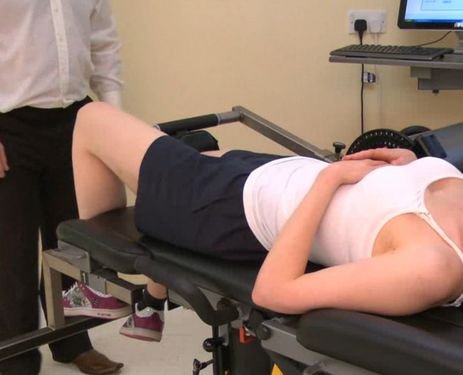Tag: flexion
-

Hip Flexion / Extension
Testing hip flexion and extension is becoming more popular. Largely because of the increase in hip arthroscopies. More research is available although it is often contradictory. Femoroacetabular Impingement (FAI): Casartelli et al.(2012) described decreased isokinetic (and isometric strength tested on a isokinetics machine) muscle strength of the hip flexors in patients with femoral acetabular impingement syndrome (FAI),…
-

Wrist Flexion / Extension
Wrist movements do not originate from a single joint. The radius articulates with three of the carple bones (known collectively as the rdiocarple joint) which in turn articulate with each other and the next row of bones (known as the intercarple joints). This allows for flexion and extension (as well as radial and ulna deviation…
-

Elbow Flexion / Extension
These movements can be performed in either the standing, seated or lying (most popular position). Most movements around the elbow in everyday life, and in fact sport, occur with the hand free in space (open chain). The position of the elbow joint moves in space in relation to the shoulder which makes the two joints co-dependant. The action…
-

Shoulder Flexion / Extension
There are currently no standard examination positions for flexion and extension of the shoulder. During the movements of the gleno-humeral joint there are always relative movements within the scapulo-thoracic junction. These are usually described as fitting a set of established normal patterns. These must be considered when testing the shoulder. When testing or exercising the shoulder…
-

Knee Flexion / Extension
Until the late 1970s 75% of all isokinetic use and research was based on a single joint system – the knee. With more recent progress in rehabilitation and knee surgery this trend no longer exists. The basic design of isokinetic dynamometers (except for special purpose units) has not changed since the original instrumentation became available…